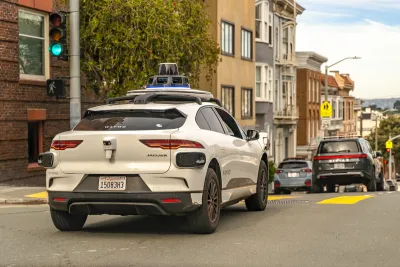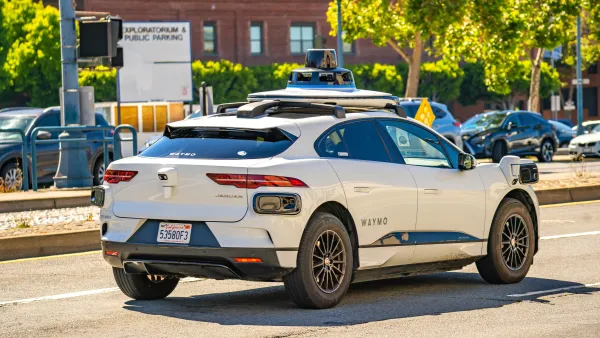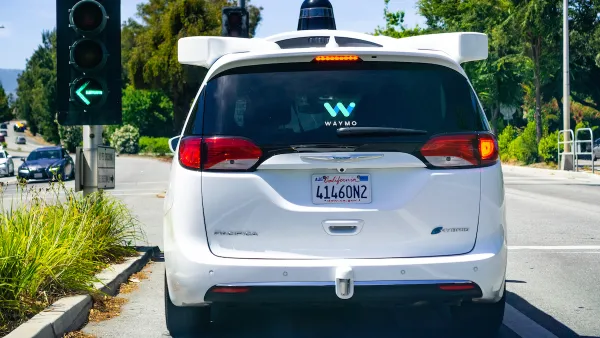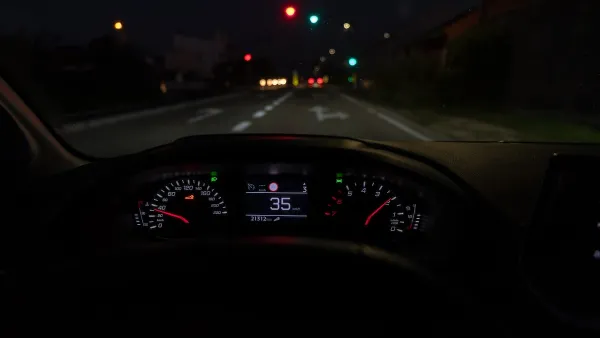One journalist recorded more than a dozen instances of Waymo autonomous cars speeding by when he tried to cross the street.

In a piece for The Washington Post, Geoffrey A. Fowler describes his experience as a pedestrian in San Francisco, where autonomous Waymo taxis are failing to stop for pedestrians in crosswalks.
“When I try to cross my street at a marked crosswalk, the Waymo robotaxis often wouldn’t yield to me. I would step out into the white-striped pavement, look at the Waymo, wait to see whether it’s going to stop — and the car would zip right past,” Fowler writes. In a week, he recorded over a dozen Waymo vehicles that failed to stop when he was crossing a street. Waymo representatives told Fowler that the cars’ software tries to predict whether a pedestrian will really cross. “It’s classic Silicon Valley hubris to assume Waymo’s ability to predict my behavior supersedes a law designed to protect me.”
It is a cautionary tale about how AI, intended to make us more safe, also needs to learn how to coexist with us. The experience has taught my family that the safest place around an autonomous vehicle is inside it, not walking around it.
While human drivers who don’t yield to pedestrians face the risk of a ticket or even jail time, “In California, a computer driver can’t even get a meaningful traffic ticket yet and is certainly not worried about going to jail.” Fowler also notes that cities can empower pedestrians with more safety measures such as flashing lights and signage at crosswalks.
FULL STORY: On roads teeming with robotaxis, crossing the street can be harrowing

National Parks Layoffs Will Cause Communities to Lose Billions
Thousands of essential park workers were laid off this week, just before the busy spring break season.

Retro-silient?: America’s First “Eco-burb,” The Woodlands Turns 50
A master-planned community north of Houston offers lessons on green infrastructure and resilient design, but falls short of its founder’s lofty affordability and walkability goals.

Delivering for America Plan Will Downgrade Mail Service in at Least 49.5 Percent of Zip Codes
Republican and Democrat lawmakers criticize the plan for its disproportionate negative impact on rural communities.

Test News Post 1
This is a summary

Test News Headline 46
Test for the image on the front page.

Balancing Bombs and Butterflies: How the National Guard Protects a Rare Species
The National Guard at Fort Indiantown Gap uses GIS technology and land management strategies to balance military training with conservation efforts, ensuring the survival of the rare eastern regal fritillary butterfly.
Urban Design for Planners 1: Software Tools
This six-course series explores essential urban design concepts using open source software and equips planners with the tools they need to participate fully in the urban design process.
Planning for Universal Design
Learn the tools for implementing Universal Design in planning regulations.
EMC Planning Group, Inc.
Planetizen
Planetizen
Mpact (formerly Rail~Volution)
Great Falls Development Authority, Inc.
HUDs Office of Policy Development and Research
NYU Wagner Graduate School of Public Service





























